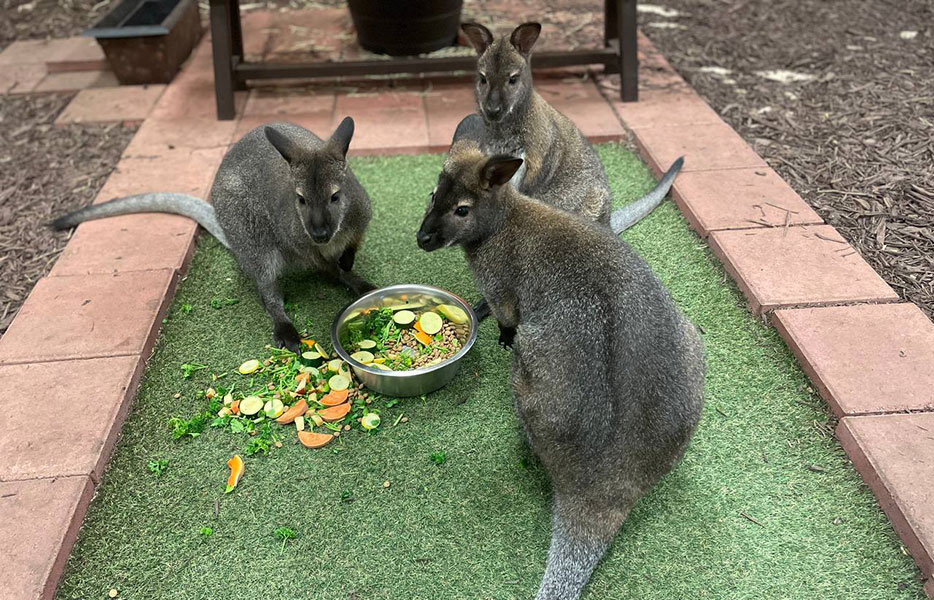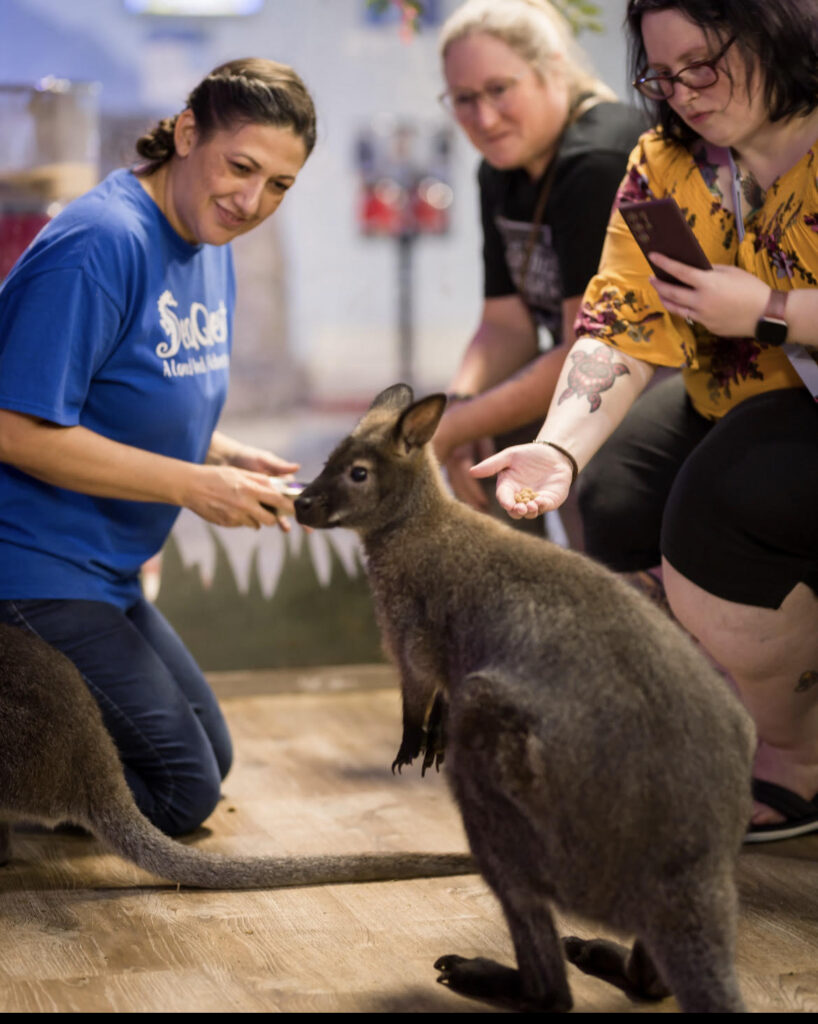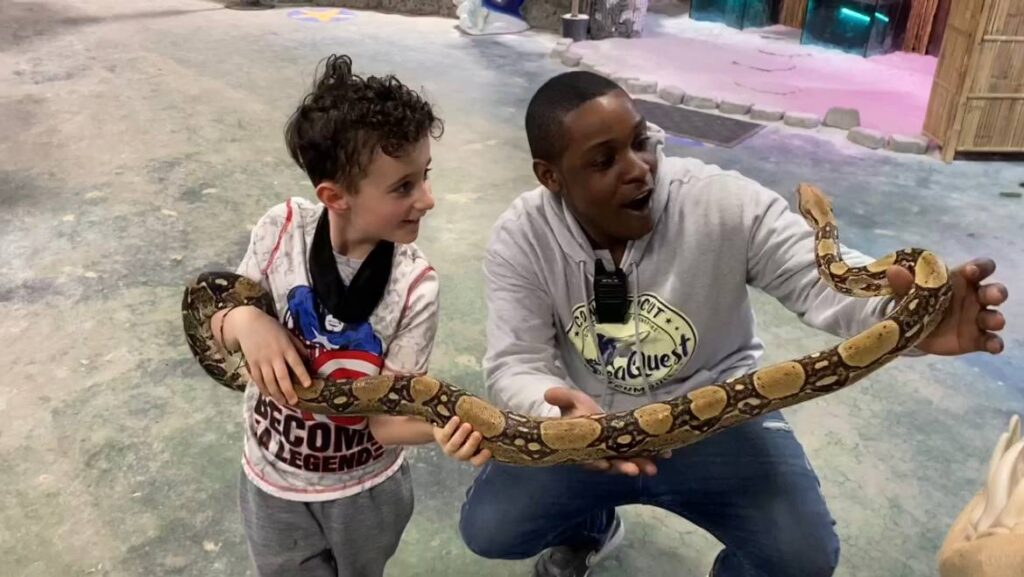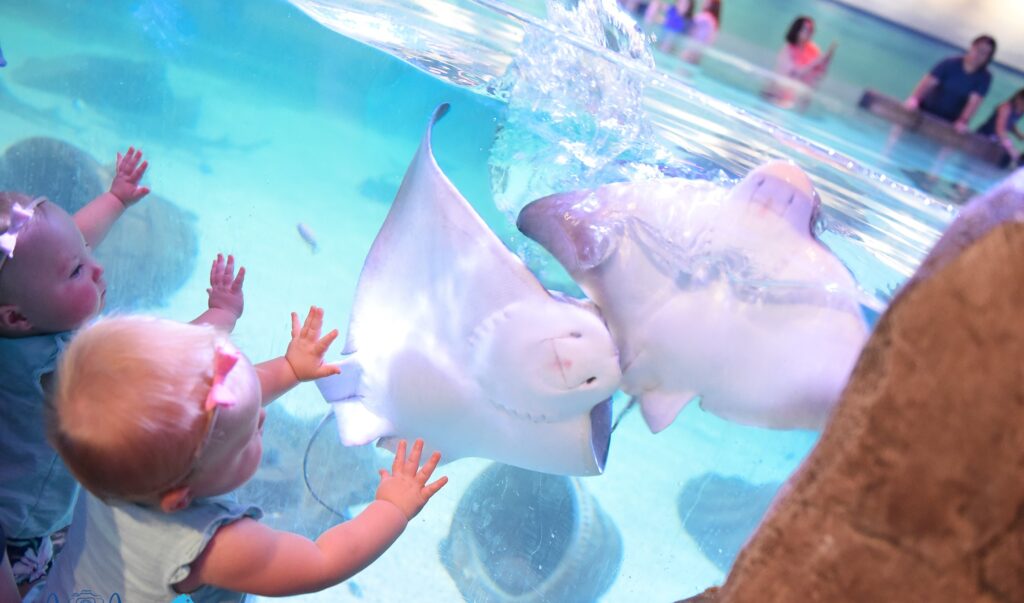SeaQuest Guide to Wallabies!
Share it on:

Known for their striking similarity to kangaroos, wallabies have grown quite popular in recent years among exotic animal circles! Wallabies are mammals that belong to the order Diprotodontia, which includes kangaroos, opossums, wombats, and koalas. They belong to the suborder Macropodiforme, which translates to “big feet.” And although wallabies are significantly smaller than kangaroos, they have a BIG presence in the land down under. In fact, the term wallaby is derived from the word “walabi” or “waliba,” which comes from the Eora Aboriginal people of coastal New South Wales, which is near modern-day Sydney. Wallabies were known for hundreds of years as “brush kangaroos.” Learn more about these hoppy little creatures in our detailed guide to wallabies below!
What is a Wallaby?
Wallabies are part of the marsupial group of mammals called macropods, and there are many types of wallaby species. Some well-known family sub-groups are shrub, brush, and rock wallabies. Wallabies tend to be small to medium-sized animals. Like all macropods, wallabies have strong back legs with long feet. They hop on their back legs when traveling fast, using their tail as a balance. Like bouncing on a spring, it is an energy-efficient way of traveling great distances. Wallabies are nocturnal and tend to be active at night while doing most of their sleeping and resting during the day.
Using hopping as its primary mode of movement, a large wallaby can easily cruise along at 15 miles per hour and reach a maximum speed of 29 miles per hour! Wallabies can weigh up to 40 pounds in adulthood. A wallaby actually has five legs! Basically, its tail acts as a fifth leg. They use their tails like legs at a slower speed and also like a tripod to prevent themselves from toppling backward.
Fun Facts about Wallabies
- Wallaby Names: A male wallaby is called a Jack. A female is called a Jill. A baby wallaby is called a Joey.
- Pitter Patter: Wallabies really don’t have vocal cords. So they are known to communicate by clicking and thumping their feet.
- Lifespan: Depending on the type of wallaby species, they generally have a lifespan between 6 to 20 years.
- Fancy a Drink: A wallaby gets most of its moisture from food. Because of this, they can survive for months without drinking water. A wallaby requires only 13% of the water needed by a similar-sized sheep.
- One or Many? Wallabies are quite common! There are about 30 different types of wallaby species. They are identified mostly from the habitat in which they live, including the rock wallaby, bush wallaby, and shrub wallaby. Some are also named based on their size and appearance. The hare wallaby is smaller and looks more like a hare rabbit, hence the name.
- What the Loch! Loch Lomond, Scotland, is also home to a group of red-necked wallabies brought to Lady Colquhoun in the 1920s.
- Join the Mob: Much like kangaroos, most wallaby species live in groups of up to 50 animals called “mobs.”
Did You Know? The Australia National Rugby Union Team is named “The Wallabies”
What is the Difference between a Wallaby and a Kangaroo?
Kangaroos are the larger of the two members in the group of macropods. Wallabies share some kangaroo characteristics, such as the pouches in which females keep newborns. Some of the largest kangaroo species can grow over 6ft in height and weigh up to 200 pounds! However, an average male wallaby only grows to about 2ft to 3ft and weighs between 30 to 40 pounds. Kangaroos also tend to have a longer lifespan, ranging from 20-25 years, versus the wallaby at 16 to 20 years. Physical characteristics tend to differ between the two as well. Wallabies have smaller facial features but larger ears than the rest of their face. They also can have distinct colors and fur textures, which set each sub-group apart.
On the other hand, Kangaroos have evenly proportionate facial features, and their fur color tends to be pretty monochrome. Grey kangaroos have color patterns that fade around the face and neck. Red kangaroos have some white patches on their head and neck areas. Overall, wallabies have become aptly known as “mini-kangaroos” in the marsupial group of animals.
Where do Wallabies Live?
Wallabies are strictly found in the Southern Hemisphere around Australia, New Zealand, and New Guinea. Depending on the species, they prefer heavily wooded and rugged areas. Rock wallabies live in boulder-strewn areas with subterranean holes and passageways, cliffs with ledges and caves, and isolated rock stacks. Shrub and Grassland species live in areas of Northern Australia and New Guinea. Their typical habitat is dry open woodland, low-growing vegetation area and sand dunes.
What do Wallabies Eat?
Wallabies are mostly vegetarians. They eat grass, leaves, flowers, and moss, sometimes nibbling on little insects. Because of their nocturnal nature, they prefer to feed at night but also graze early in the morning and late evening when the temperature is cooler.
Can You Have a Wallaby as a Pet?
The most important thing to remember is that a wallaby is an exotic animal and while they can be tamed and socialized, they are wild animals and are not encouraged as domestic pets. In some areas of Australia, wallabies have been trained to live indoors and show signs of affection with a playful spirit. But they’re very intelligent and have learned the ability to open doors and cabinets as well as jump on counters and other high places. They are also known to enjoy taking baths with humans too! Wallabies are friendly creatures that can be very cordial with their caregivers. They can be cuddly and are known to follow people around rooms. They can even coexist with other non-forceful house pets.
Is the Wallaby Endangered?
According to the IUCN Redlist, wallabies are not listed as endangered overall, but certain species are. The Black Forest Wallaby is Critically Endangered, the Proserpine Rock-wallaby is Endangered, and the Yellow-footed Rock-wallaby is Near Threatened. The five subspecies of Black-footed Rock-wallaby are also listed as endangered. Sadly, some species are now extinct, including the Eastern Hare Wallaby and the Crescent Nail-tail Wallaby.
Meet a Wallaby Today!
Want to meet a wallaby up close and personal without having to travel all the way across the world? Head “down under” to your nearest SeaQuest! In this exciting encounter, guests will meet and participate in an interactive feeding along with a short educational overview of the Wallaby species and their natural environment. They will also have an opportunity to learn about SeaQuest conservation efforts to protect the Wallaby’s home habitat! Book your one-on-one interaction at one of these SeaQuest locations today: Las Vegas, California, Texas, Lynchburg, and Minnesota.





